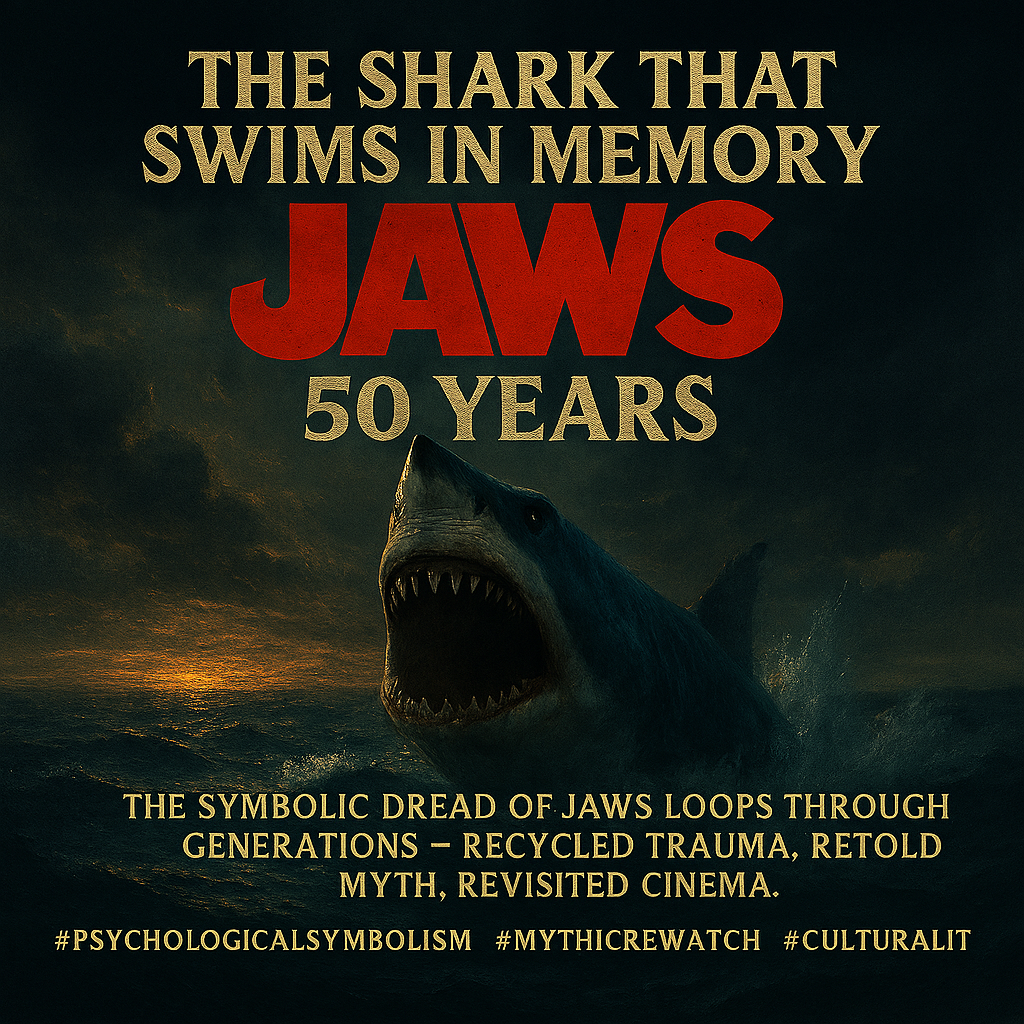
The Psychology Jaws at Magical 50 Years Of Storytelling
JAWS – The Shark That Shaped Our Minds, Fear, and Oceans
The Psychological Wake of Spielberg’s Masterpiece
Fifty years ago, Jaws didn’t just premiere – it detonated. What began as a suspense thriller about a shark became a psychological event that rewired how we perceive nature, fear, and storytelling. Spielberg’s restraint – his decision to show less and suggest more – created a new emotional architecture for cinema. The shark wasn’t just a predator – it was a symbol of the unknown, the uncontrollable, the submerged terror we carry beneath the surface of consciousness. Audiences didn’t just watch Jaws – they absorbed it. It became part of their emotional vocabulary. Beaches became battlegrounds. The ocean became a mirror for anxiety. And the shark became a mythic figure – less animal, more archetype.
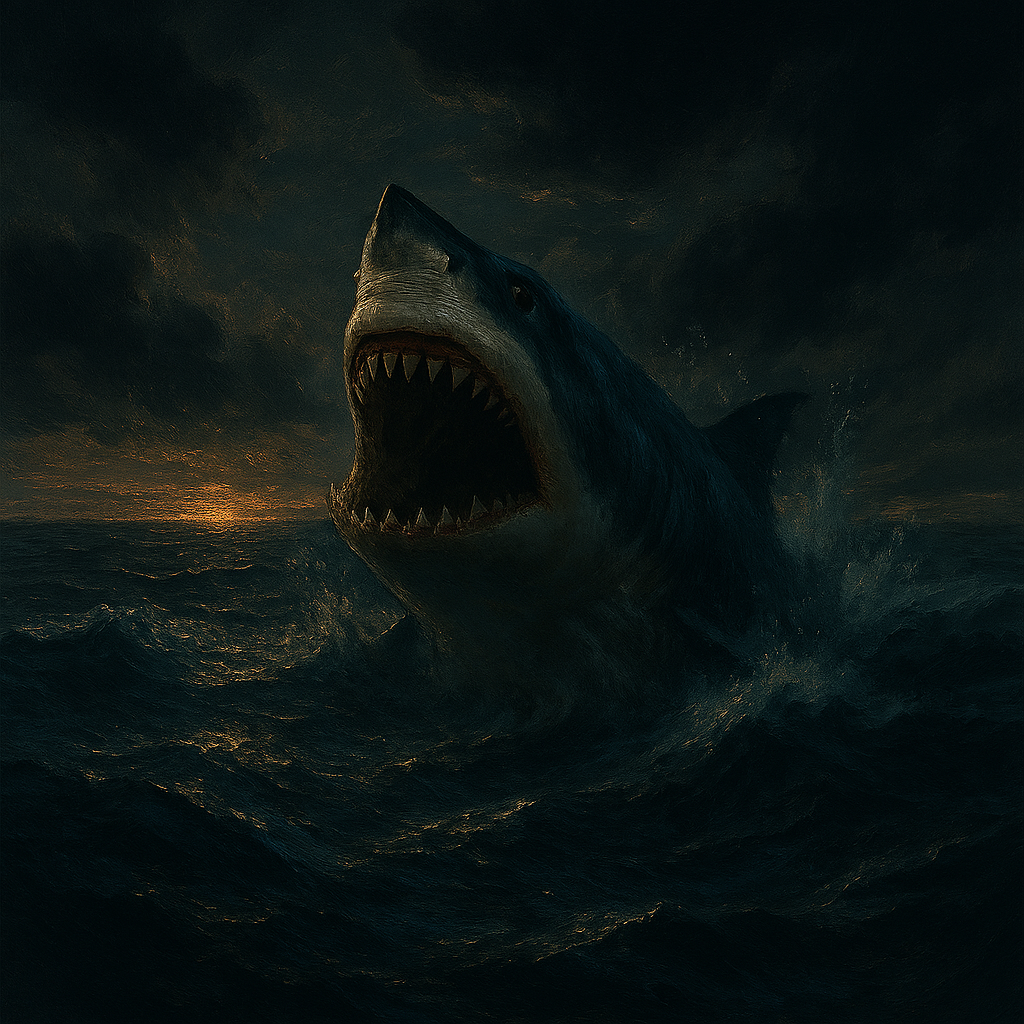
Fear as Architecture – How Jaws Rewired the Mind
Jaws didn’t invent fear – it built a cathedral around it. Spielberg’s use of suggestion over spectacle created a new blueprint for cinematic anxiety. The shark was rarely seen – but always felt. This absence became presence. The mind filled in the gaps with dread. The two-note score became a conditioned stimulus – triggering panic even in the absence of threat. Viewers began to associate open water with danger – even if they’d never seen a shark. This is classical conditioning at scale. Jaws turned the ocean into a psychological trigger. It bypassed logic and went straight to the limbic system. The film taught audiences to fear what they couldn’t see. It made ambiguity terrifying. This technique is now standard in horror and suspense. But Jaws was the prototype. It showed that fear is most powerful when it’s symbolic. The shark became a metaphor for the unconscious. For trauma. For the parts of ourselves we can’t control. The beach became a liminal space – where safety meets chaos. Even inland viewers felt the ripple. Jaws created a fear that transcended geography. It became cultural. Generational. Inescapable. The film’s psychological impact is still studied in behavioral science. It conditioned millions to associate nature with threat. And it proved that storytelling can shape emotion more deeply than fact.
The Predator Myth – How Jaws Recast Nature as Nemesis
Before Jaws, sharks were largely unknown to the public – mysterious, yes, but not monstrous. The film reframed the great white as a calculating antagonist – not just dangerous, but vengeful. This anthropomorphism distorted ecological truth – sharks don’t stalk humans, they follow instinct. Yet the narrative stuck. The shark became a symbol of nature’s fury – a force that retaliates. This myth bled into policy, tourism, and education. Shark culling programs gained public support – driven by fear, not science. Beaches installed warning systems – not because of increased danger, but increased anxiety. The predator myth became cultural shorthand – a way to dramatize risk. Jaws made the ocean feel personal – as if it had intent. This shift altered how people engage with wilderness. Nature became adversarial – something to conquer or avoid. The shark was no longer part of an ecosystem – it was a villain. This framing persists in media – even documentaries struggle to undo it. Conservationists now begin with myth-busting – before they can teach biology. Jaws created a symbolic predator – one that lives in imagination more than water. The film’s legacy is a reminder – stories shape species survival. The predator myth is powerful – but it’s also reversible. Education, empathy, and exposure can reframe the shark. Jaws gave us a symbol – now we must give it context.
Cultural Trauma – The Lingering Echo of Cinematic Fear
Jaws didn’t just scare people – it traumatized them. For many, the fear was immediate – but for others, it lingered. Children who saw the film in theaters developed lifelong aversions to water. Some refused to swim – even in pools. The fear was irrational – but deeply embedded. This is the nature of cultural trauma – it bypasses logic and lodges in emotion. Jaws became a shared experience – a collective wound. Families talked about it. Schools debated it. Psychologists studied it. The film became a reference point for fear – a benchmark. It shaped how people describe anxiety – “like a shark circling.” This metaphor entered language, therapy, and art. Jaws created a new emotional vocabulary. The trauma was cinematic – but the impact was real. It influenced parenting, recreation, and even dreams. Some viewers reported recurring nightmares – decades after seeing the film. This is the power of symbolic media – it embeds itself in memory. Jaws didn’t just entertain – it imprinted. The trauma is now part of its legacy. And like all trauma – it can be healed, reframed, and understood.
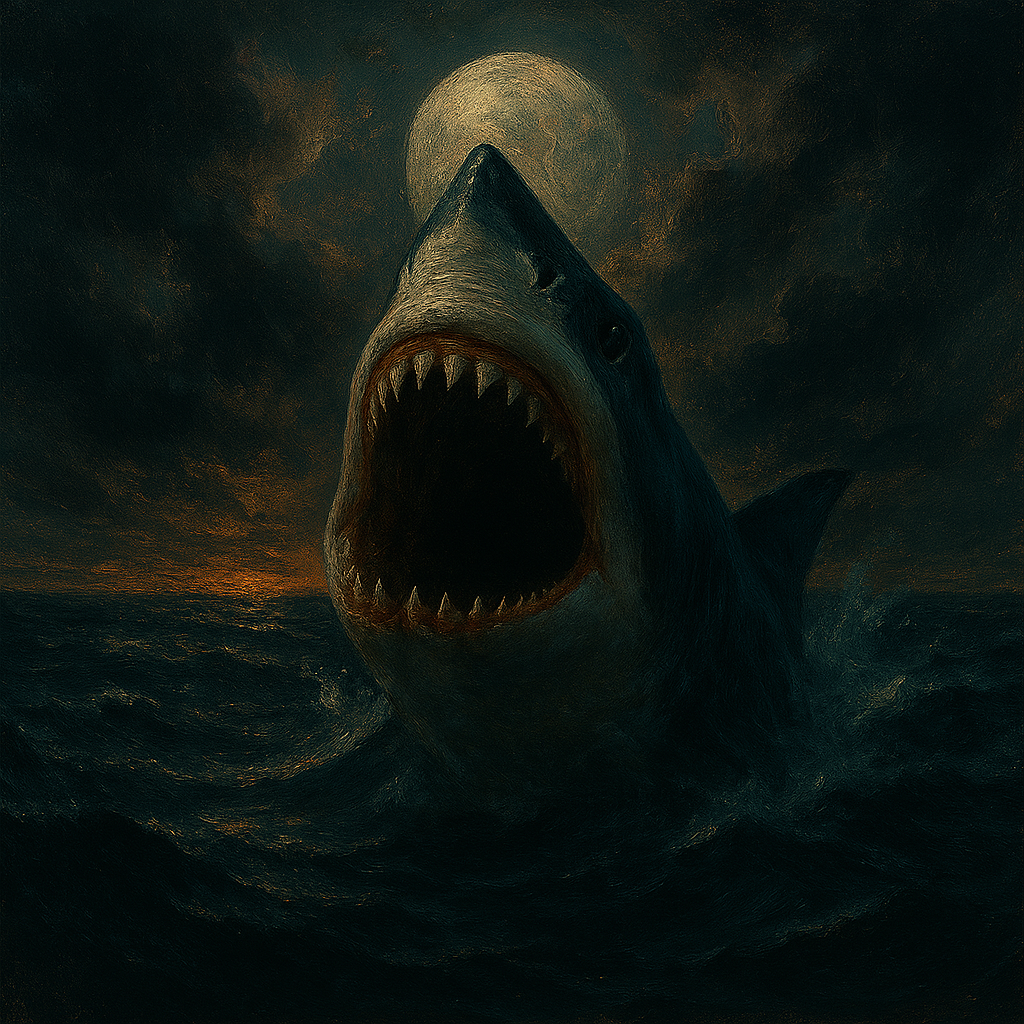
Symbolic Depth – The Shark as Archetype
The shark in Jaws is more than an animal – it’s an archetype. It represents the unconscious – the part of ourselves we fear. It emerges from the depths – uninvited, unstoppable. This mirrors how trauma surfaces – suddenly, violently. The shark is a symbol of repression – what we bury, but cannot escape. It attacks without warning – like intrusive thoughts. Spielberg’s restraint amplified this symbolism – the less we saw, the more we projected. The ocean became a metaphor for the psyche – vast, mysterious, and dangerous. The beach was the boundary – between conscious and unconscious. The shark crossed that boundary – forcing confrontation. This is why the film resonates – it’s not just about danger, but discovery. The characters must face their fears – not just the shark, but themselves. Brody fears inadequacy. Hooper fears irrelevance. Quint fears memory. The shark brings these fears to the surface. It’s not just a threat – it’s a mirror. Jaws is a psychological journey – disguised as a thriller. The shark is the shadow – the Jungian force we must integrate. This is why the film endures – it speaks to the soul, not just the senses.
The Ocean as Unconscious – Reframing Nature Through Narrative
In Jaws, the ocean is not just a setting – it’s a psychological space. It represents the unconscious mind – vast, unknowable, and filled with latent threat. The shark emerges from this space – like a repressed memory breaking through. Spielberg’s framing turns the water into a metaphor for emotional depth. The surface is calm – but beneath it, chaos waits. This duality mirrors the human psyche – conscious control masking unconscious fear. The ocean becomes a character – indifferent, infinite, and symbolic. It’s not the shark alone that terrifies – it’s the idea that danger is always submerged. This framing reshaped how audiences perceive nature – not as neutral, but as emotionally charged. Beaches became thresholds – where safety ends and uncertainty begins. The film taught viewers to read landscapes symbolically – not just visually. The ocean became a mirror – reflecting internal states. Anxiety, repression, and trauma all found expression in the waves. This symbolic reading persists – in media, literature, and therapy. Jaws gave the ocean emotional weight – it became a site of confrontation. The shark is the symptom – the ocean is the source. This shift altered how people engage with water – not just physically, but emotionally. The ocean became a place of reckoning – not just recreation. Jaws turned nature into narrative – and narrative into psychological truth. That transformation still shapes how we tell stories about the wild.
The Cinematic Mind – How Jaws Changed Storytelling Psychology
Before Jaws, thrillers relied on plot – after Jaws, they relied on psychology. Spielberg’s approach was internal – building tension through character and suggestion. The shark was the catalyst – but the fear came from within. Audiences weren’t just reacting to danger – they were projecting onto it. This shift changed how films are structured – pacing became emotional, not just narrative. Suspense was no longer about what happens – but how it feels. Jaws taught filmmakers to manipulate anticipation – not just action. The film’s rhythm mirrors anxiety – slow build, sudden spike, unresolved tension. This psychological pacing became a template – used in horror, drama, and even comedy. The audience became part of the story – their reactions shaped the experience. Jaws created emotional architecture – scenes designed to trigger specific responses. This approach influenced editing, scoring, and framing. The camera became a psychological tool – not just a visual one. Spielberg’s restraint forced viewers to imagine – and imagination is where fear lives. The film’s success proved that emotional engagement drives narrative impact. Jaws wasn’t just watched – it was felt. This changed how studios evaluate scripts – emotional arcs became central. The cinematic mind became the new frontier – stories designed to shape thought and feeling. Jaws opened that door – and we’re still walking through it. The film’s legacy is not just technical – it’s psychological. It redefined what storytelling could do to the human brain.

Lifestyle Rewired – How Jaws Altered Behavior and Belief
After Jaws, the beach was never the same. Vacationers hesitated before entering the water – even in places with no sharks. The film created behavioral residue – fear that outlasted the viewing experience. This is emotional conditioning – media shaping real-world choices. Families changed travel plans – opting for pools over oceans. Surf culture adapted – with new safety protocols and public education. Lifeguards became shark experts – not just swimmers. Tourism boards had to respond – balancing fear with fact. Jaws created a new lifestyle variable – psychological risk. Even inland communities felt the shift – fear transcended geography. The ocean became a site of anxiety – not just leisure. This altered how people relate to nature – with caution, not curiosity. The film’s impact extended to fashion, advertising, and recreation. Shark imagery became iconic – both feared and fetishized. Jaws made the predator a lifestyle symbol – appearing on t-shirts, logos, and toys. This paradox reflects the film’s depth – fear and fascination intertwined. The shark became a brand – not just a threat. Lifestyle choices began to reflect emotional narratives – shaped by media, not just experience. Jaws proved that storytelling can alter behavior – not just belief. The film’s legacy lives in how we swim, travel, and imagine the sea.
The Ethics of Fear – When Storytelling Shapes Survival
Jaws didn’t just entertain – it altered ecosystems. The fear it generated led to real-world consequences for sharks. Populations declined as public anxiety turned into policy. The film unintentionally created a villain – and the world responded with punishment. This raises ethical questions about narrative power. When fiction reshapes reality, who bears responsibility. Spielberg never intended ecological harm – but the impact was undeniable. The shark became a scapegoat – a symbol of terror rather than biology. Conservationists now begin with myth correction – before they can teach science. Jaws created a fear so potent it outlived the facts. This is the ethical tension of storytelling – emotional truth versus ecological consequence. The film’s legacy includes both cinematic brilliance and environmental fallout. It’s a case study in unintended influence. Media doesn’t just reflect culture – it molds it. Jaws taught us that fear sells – but it also scars. The ethics of fear demand reflection – especially when nature is the target. Today’s filmmakers face similar dilemmas – how to dramatize without distorting. Jaws remains a cautionary tale – not just in plot, but in impact. Its power is undeniable – and so is its responsibility. The ethics of fear are now part of its shadow.
Memory and Myth – How Jaws Became a Cultural Ritual
Jaws is no longer just a movie – it’s a ritual. Families pass it down like folklore. Summer screenings become tradition. The shark becomes a rite of passage – a symbol of cinematic initiation. This is how myth forms – repetition, resonance, and emotional imprint. Jaws entered the cultural bloodstream – not through marketing, but memory. People remember where they saw it. How they felt. What they feared. These memories become shared language. The film becomes a reference point – for fear, for storytelling, for ocean imagery. Jaws is quoted, parodied, and studied – but also felt. It lives in dreams, jokes, and metaphors. The shark becomes shorthand – for danger, for depth, for the unknown. This is mythic recursion – a story that loops through generations. Jaws shaped not just viewers, but viewership. It taught people how to watch – how to anticipate, how to react. The film’s structure became a template – for suspense, for pacing, for emotional rhythm. Its legacy is ritualistic – embedded in behavior and belief. Jaws is now part of cultural DNA – a myth we revisit, retell, and reframe.

Symbolic Recovery – Healing the Fear Jaws Created
Fear is powerful – but it’s also transformable. The anxiety Jaws instilled can be redirected. Education reframes the shark – from monster to misunderstood. Conservation efforts now use storytelling to heal. Documentaries show the truth – sharks are vital, not vengeful. Emotional recovery begins with exposure. People swim again. Dive again. Learn again. The ocean becomes less threatening – more inviting. This is symbolic recovery – rewriting the narrative. Jaws created a rupture – but it also opened a dialogue. The fear it sparked led to awareness. That awareness led to action. Shark conservation is now mainstream. The myth is being dismantled – piece by piece. Emotional healing is slow – but visible. Children learn about sharks differently now. They see biology, not horror. Jaws remains a shadow – but also a spark. Recovery is possible – when story meets truth.
The Cinematic Body – How Jaws Rewired Physical Response
Jaws didn’t just affect thought – it altered physiology. Viewers reported elevated heart rates, muscle tension, and nausea during screenings. The film became a somatic experience – fear lived in the body, not just the mind. This is cinematic embodiment – when narrative bypasses cognition and enters sensation. Spielberg’s pacing created anticipatory stress – long silences followed by sudden ruptures. The shark’s absence became a source of physical discomfort. Audiences braced themselves – even when nothing was happening. This tension looped through the nervous system – creating a feedback cycle of dread. Jaws conditioned viewers to expect pain – even in pleasure. The beach, once relaxing, became a site of vigilance. The body learned to fear the water – even without evidence. This is trauma encoding – when media imprints on muscle memory. Jaws became a physiological trigger – not just a psychological one. The film’s legacy includes real symptoms – panic attacks, avoidance behaviors, and sleep disruption. Researchers studied these effects – noting how fiction can mimic trauma. Jaws became a case study in cinematic stress. The body responded as if the threat were real – because emotionally, it was. This changed how filmmakers approach suspense – understanding that fear is felt, not just imagined. Jaws taught cinema to touch the body – not just the brain. Its impact is somatic – and still surfacing.
Recursive Symbolism – The Shark as Cultural Loop
The shark in Jaws is not static – it evolves with each viewing. It reflects the fears of the moment – adapting to context. In the 70s, it symbolized nature’s revenge. In the 80s, it became corporate threat. In the 90s, it echoed trauma. Today, it mirrors ecological collapse. The shark loops through meaning – never fixed, always fluid. This is symbolic recursion – when a figure reinterprets itself across time. Jaws created a living symbol – one that adapts to cultural anxiety. The shark is now used in political cartoons, climate metaphors, and psychological essays. It’s a cipher – absorbing whatever fear we project. This makes it mythic – not just cinematic. The shark is no longer just a character – it’s a cultural tool. It helps us process danger, uncertainty, and loss. Each generation sees something different – but feels something familiar. Jaws created a recursive symbol – one that loops through emotion and meaning. This is why it endures – it’s not just a film, it’s a framework. The shark is a mirror – reflecting our deepest unease. And each time we watch, it reflects something new. Jaws taught us that symbols evolve – and that fear is never final.
The Future We Swim Toward – Reclaiming Narrative from Fear
Fifty years after Jaws, we stand at a crossroads. The fear it created is still present – but so is the opportunity to reframe. Conservation efforts are gaining ground – sharks are being understood, not hunted. Filmmakers are telling new stories – ones that balance suspense with science. The ocean is being reclaimed – not as threat, but as wonder. This is narrative recovery – rewriting the emotional script. Jaws opened a wound – but it also opened a conversation. We now understand the power of media – and the responsibility it carries. The future of storytelling lies in empathy – not exploitation. The shark can still be dramatic – but it must also be truthful. Emotional impact doesn’t require distortion. Suspense can coexist with accuracy. Jaws taught us how to feel – now we must learn how to heal. The next wave of cinema can build on its legacy – without repeating its harm. The ocean deserves reverence – not fear. Sharks deserve understanding – not myth. Viewers deserve stories that challenge – not condition. The future is already forming – in classrooms, documentaries, and new films. We are swimming toward it – slowly, symbolically, together. Jaws showed us the depths – now we must rise.
The Shark as Shadow – Jungian Archetypes Beneath the Surface
In Jungian psychology, the shadow represents the unconscious self – the parts we repress, deny, or fear. The shark in Jaws embodies this archetype – surfacing from the depths without warning. It is not just a threat – it is a reflection. A mirror of what we refuse to confront. Spielberg’s restraint amplifies this symbolism – the shark is rarely seen, yet always present. This absence makes it archetypal – undefined, yet emotionally precise. The shark becomes a projection screen – for guilt, shame, and anxiety. It attacks without motive – like intrusive thoughts. The ocean becomes the unconscious – vast, mysterious, and symbolic. The beach is the ego – trying to maintain control. The shark crosses that boundary – forcing confrontation. Each character in Jaws faces their own shadow. Brody fears failure. Hooper fears irrelevance. Quint fears memory. The shark is not just a beast – it is their reckoning. This is why the film resonates – it speaks to the psyche, not just the senses. The shark is the shadow – and the story is the integration. Jaws becomes a psychological ritual – facing what we fear to reclaim what we are. The archetype lives on – in dreams, metaphors, and media. The shark is not just in the water – it’s in us.
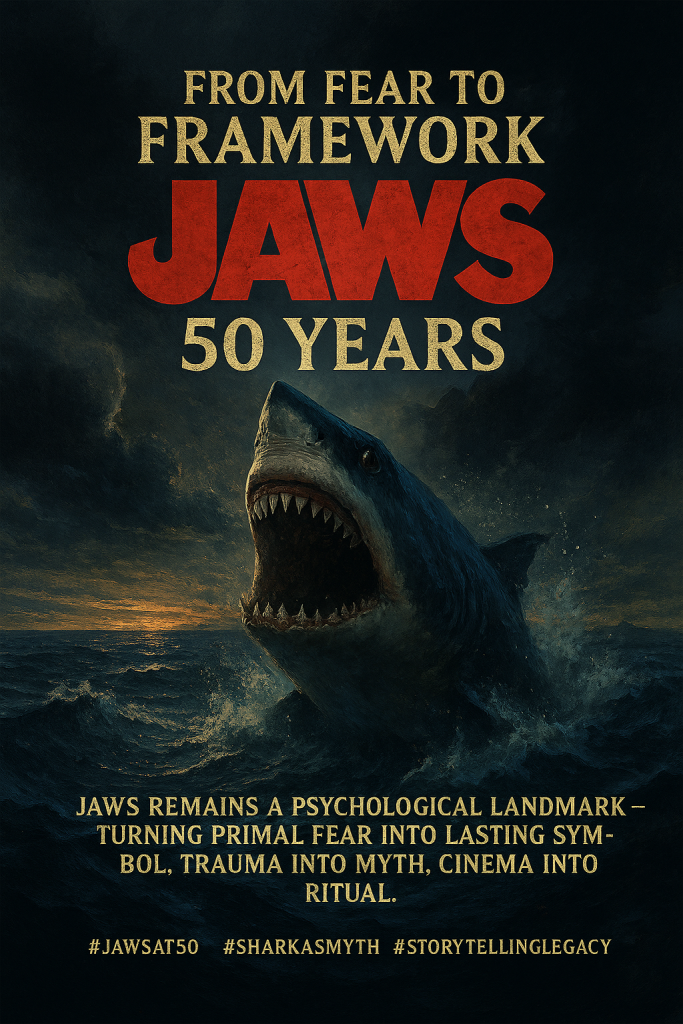
The Echo Chamber – How Jaws Shaped Media Recursion
After Jaws, media began to echo its structure. Suspense became rhythmic – slow build, sudden rupture, unresolved tension. The shark became a template – for villains, threats, and metaphors. Films copied its pacing – television borrowed its tone. Even documentaries adopted its framing – predator as protagonist. This recursion shaped how stories are told – not just what they say. Jaws created a feedback loop – media referencing media, fear reinforcing fear. The shark became a symbol – not just in fiction, but in fact. News reports used shark imagery to dramatize unrelated events. Advertisements borrowed the score – to trigger recognition. The film’s DNA spread across genres – horror, thriller, drama, even comedy. Jaws taught media how to manipulate anticipation. It showed that suggestion is stronger than spectacle. This lesson became law – in editing rooms and writer’s rooms. The echo chamber grew – until the shark was everywhere. Not just in water, but in headlines, logos, and metaphors. Jaws created a media language – one built on fear, rhythm, and recursion. That language still shapes how we consume content. The shark is now a symbol of structure – not just story. Jaws didn’t just change cinema – it changed communication.
The Emotional Archive – How Jaws Lives in Memory
Jaws is stored not just in film reels – but in emotional memory. Viewers remember how they felt – not just what they saw. The fear was visceral – encoded in muscle, breath, and heartbeat. This is emotional archiving – when media becomes memory. Jaws lives in dreams, anecdotes, and family stories. It’s passed down like folklore – a rite of cinematic passage. Parents warn children – not about sharks, but about the feeling. The film becomes a generational echo – fear looping through time. Emotional archives are powerful – they shape behavior, belief, and identity. Jaws entered that archive – not through fact, but through feeling. It became part of how people understand danger. The shark is remembered – not for its biology, but its impact. This memory shapes choices – where to swim, what to watch, how to feel. Emotional archives are hard to rewrite – but not impossible. Education, exposure, and empathy can reframe the memory. Jaws is now part of cultural memory – a symbol of cinematic emotion. It lives in the archive – not just as film, but as feeling. That archive is active – influencing decisions and discussions. Jaws taught us that emotion is durable – and that stories live in the body. The shark swims in memory – long after the credits roll.
The Cinematic Threshold – Jaws and the Edge of Consciousness
Jaws operates at the threshold – between safety and danger, known and unknown. The beach is not just a location – it’s a liminal space. It marks the edge of consciousness – where control ends and chaos begins. The shark crosses this boundary – forcing confrontation with the unconscious. Spielberg’s framing emphasizes this tension – wide shots of calm followed by sudden rupture. The threshold becomes emotional – viewers feel suspended between anticipation and dread. This structure mirrors psychological transition – the moment before trauma surfaces. Jaws teaches us to fear the edge – not the center. The film’s power lies in its liminality – it never lets us settle. The ocean is infinite – but the beach is intimate. That contrast creates unease – a sense of vulnerability. The characters are caught in this tension – between logic and instinct. Brody stands on the shore – trying to protect what he cannot control. Hooper dives into the depths – seeking knowledge in chaos. Quint sails into memory – haunted by what the ocean took. Each man navigates the threshold – each responds differently. Jaws is not just about survival – it’s about crossing. The shark is the gatekeeper – of fear, of truth, of transformation. The threshold is where story becomes symbol – and symbol becomes self. Jaws lives at that edge – and so do we.
The Myth of Control – How Jaws Exposed Human Fragility
Jaws dismantles the illusion of control. The town believes it can manage nature – through denial, policy, and bravado. But the shark refuses containment. It exposes fragility – not just physical, but psychological. The mayor clings to commerce – ignoring evidence. Brody clings to authority – but feels powerless. Hooper clings to science – but finds chaos. Quint clings to vengeance – but meets fate. Each character represents a strategy – and each fails. The shark is not just a threat – it’s a revelation. It shows that control is a myth – especially in the face of nature. This theme resonates beyond the film – into climate, politics, and psychology. Jaws became a metaphor – for systems breaking under pressure. The ocean cannot be managed – only respected. The shark cannot be reasoned with – only confronted. This narrative shaped public discourse – about risk, denial, and resilience. Jaws taught us that fear reveals truth – and truth reveals limits. The film’s legacy includes this lesson – control is comforting, but often false. The shark is not just a killer – it’s a teacher. It forces humility – and humility is the beginning of wisdom. Jaws stripped away certainty – and gave us reflection.
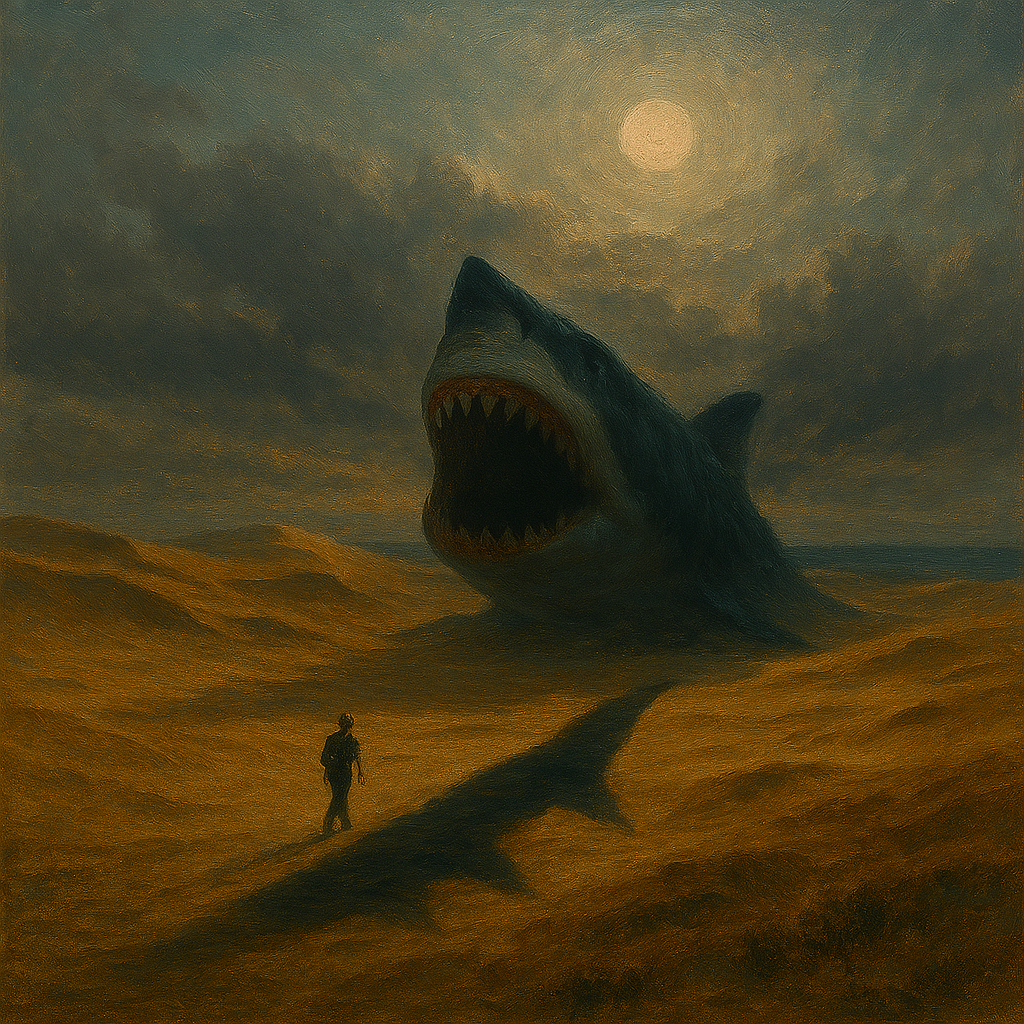
The Cinematic Mirror – Jaws and the Reflection of Self
Jaws is not just a story – it’s a mirror. It reflects the viewer – their fears, their instincts, their projections. The shark becomes personal – shaped by what each person brings. Some see trauma. Some see nature. Some see myth. This multiplicity makes the film universal – yet intimate. Jaws adapts to the psyche – becoming what the viewer needs to confront. The ocean reflects depth – the shark reflects shadow. The beach reflects boundary – the boat reflects isolation. Each element is symbolic – each scene is psychological. The film becomes a diagnostic tool – revealing emotional architecture. Viewers leave changed – not just entertained. Jaws is not passive – it’s participatory. It asks questions – about fear, control, and identity. The shark is not just in the water – it’s in the viewer. This is why the film endures – it’s not fixed, it’s fluid. Jaws is a cinematic mirror – and each reflection is different. The film becomes a ritual – of recognition and reckoning. It teaches us to see – not just the shark, but ourselves. And in that reflection – we find meaning.
The Ritual of Rewatching – Jaws as Emotional Recalibration
Rewatching Jaws is not just entertainment – it’s ritual. Each viewing becomes a recalibration – of memory, emotion, and meaning. The shark changes – not in form, but in function. It reflects new fears – shaped by age, context, and experience. What once felt terrifying may now feel tragic. What once felt chaotic may now feel symbolic. The film adapts to the viewer – not the other way around. This is emotional recursion – looping through layers of self. Jaws becomes a mirror – not just of fear, but of growth. Rewatching reveals what we’ve internalized – and what we’ve outgrown. The ocean feels different – depending on what we carry. The shark becomes a test – of resilience, empathy, and insight. Ritual viewing is not passive – it’s participatory. It invites reflection – not just reaction. Families rewatch together – passing down emotion like inheritance. Critics revisit it – not to judge, but to reframe. Scholars dissect it – not to explain, but to understand. Jaws becomes a cinematic compass – pointing toward the unconscious. Each rewatch is a journey – into deeper waters. And each time, the shark swims closer to meaning.
The Sound of Suspense – How Jaws Tuned the Nervous System
John Williams didn’t just compose a score – he engineered a stimulus. The two-note motif became a signal – of threat, of tension, of anticipation. It bypassed language – entering the nervous system directly. Audiences reacted before they understood – heart rate rising, breath shortening. This is sonic conditioning – music as emotional architecture. The simplicity made it powerful – repetition made it unforgettable. The score became a character – invisible, but omnipresent. It shaped the rhythm of the film – and the rhythm of fear. Jaws taught filmmakers that sound is not accessory – it’s agency. The ocean scenes are quiet – until the motif begins. That contrast creates dread – silence becomes suspicious. The score loops through the psyche – long after the film ends. It’s used in parodies, trailers, and even classrooms. But its original power remains – primal, precise, and predictive. Williams tuned the audience – like an instrument. The motif became a cultural signal – even outside the film. It’s played to evoke fear – even in unrelated contexts. Jaws proved that sound can sculpt emotion – not just support it. The score is not background – it’s blueprint. And it still echoes – in every cinematic heartbeat.
The Shark as Zeitgeist – Jaws and the Spirit of the Seventies
Jaws emerged from a specific moment – but transcended it. The 1970s were turbulent – politically, socially, emotionally. The shark became a symbol – of instability, of threat, of reckoning. It mirrored national anxiety – about control, corruption, and collapse. The ocean represented uncertainty – vast and ungovernable. The beach was fragile – a false sense of safety. The town’s denial echoed real-world avoidance – of crisis, of truth, of consequence. Jaws tapped into the zeitgeist – not through commentary, but through emotion. The shark was not political – but it felt political. It exposed fragility – in systems, in leadership, in belief. The film’s success reflected public appetite – for catharsis, for confrontation. Jaws became a cultural release valve – fear externalized, processed, and ritualized. It shaped how people talked about danger – and how they imagined survival. The shark became a metaphor – for everything that lurked beneath the surface. Jaws didn’t just reflect the seventies – it helped define them. It became part of the emotional landscape – a cinematic landmark. The film’s legacy includes this historical resonance – fear as cultural mirror. The shark swam through the decade – absorbing its shadows. And in doing so – it became timeless.
The Ethics of Spectacle – When Fear Becomes Entertainment
Jaws is thrilling – but it also raises ethical questions. When does suspense become manipulation. When does fear become exploitation. The shark is dramatized – but at what cost. The audience is conditioned – but to what end. Jaws created a template – for spectacle built on anxiety. It proved that fear sells – but also scars. The film’s impact on sharks was unintended – but undeniable. This raises questions about responsibility – in storytelling, in media, in culture. Filmmakers now face similar dilemmas – how to dramatize without distorting. Jaws is a case study – in emotional power and ecological consequence. The spectacle is masterful – but also mythic. The shark is not just a character – it’s a construct. Audiences cheer its defeat – but mourn its misunderstanding. The ethics of spectacle demand reflection – especially when nature is involved. Jaws taught us how to feel – now we must learn how to think. Entertainment is not neutral – it shapes perception. The film’s legacy includes this tension – between art and impact. The shark is thrilling – but also tragic. And the spectacle it created – still ripples through media.
The Cinematic Ocean – How Jaws Redefined Water as Emotion
Before Jaws, the ocean was backdrop – after Jaws, it became character. Spielberg framed it as infinite – mysterious, indifferent, symbolic. The water became emotional terrain – not just physical space. It reflected fear, memory, and myth. The ocean scenes are vast – but never peaceful. They pulse with tension – even in silence. The horizon becomes ominous – not open. This framing changed how audiences perceive water – not as neutral, but as charged. The ocean became cinematic – layered with meaning. It’s where the shark hides – but also where truth surfaces. The water is not just wet – it’s psychological. Jaws made the ocean feel alive – and unpredictable. It became a site of confrontation – between self and shadow. The beach is the boundary – the boat is the bridge. The ocean is the unconscious – and the shark is its messenger. This symbolism persists – in film, literature, and therapy. Jaws redefined aquatic imagery – from serene to suspenseful. The ocean became emotional architecture – and the film became its blueprint. Jaws didn’t just film water – it mythologized it. And that myth still flows – through every wave of storytelling.
The Shark as Memory – Trauma, Repetition, and Emotional Encoding
Jaws didn’t just create fear – it encoded it. The shark became a mnemonic device – triggering emotional recall across decades. Viewers remember the feeling – even if they forget the plot. This is trauma repetition – when a symbol loops through memory. The shark is not just remembered – it’s relived. Emotional encoding makes the fear durable – resistant to logic, immune to time. Jaws became a reference point – for anxiety, for suspense, for confrontation. The shark swims through memory – surfacing in dreams, metaphors, and behavior. This repetition shapes identity – how people relate to nature, risk, and narrative. The film becomes part of the viewer’s emotional architecture. It’s not just watched – it’s absorbed. The shark is a symbol of what we carry – and what we avoid. Jaws taught us that trauma can be cinematic – and cinema can be traumatic. The repetition is not accidental – it’s structural. Spielberg built the film to loop – tension rising, release delayed, resolution partial. This mirrors how trauma operates – unresolved, recursive, symbolic. The shark is the rupture – and the reminder. Memory becomes myth – and myth becomes behavior. Jaws is not just a film – it’s an emotional echo. And that echo still resonates – in water, in mind, in story.

The Cinematic Sublime – Awe, Terror, and the Scale of Emotion
Jaws evokes the sublime – not just fear, but awe. The ocean is vast – the shark is powerful – the human is small. This scale creates emotional dissonance – wonder mixed with dread. The sublime is not comfort – it’s confrontation. Spielberg captures this tension – framing nature as both beautiful and brutal. The shark is terrifying – but also majestic. The ocean is dangerous – but also sacred. This duality creates depth – emotional, symbolic, cinematic. Jaws teaches viewers to feel big feelings – without resolution. The sublime resists closure – it loops through awe and anxiety. The film becomes a vessel – for emotional expansion. Viewers leave changed – not just scared, but stretched. The shark is not just a threat – it’s a threshold. It invites reflection – on mortality, meaning, and myth. The ocean becomes a metaphor – for the infinite, the unknown, the divine. Jaws is not just suspense – it’s spiritual. The scale of emotion is deliberate – designed to overwhelm. This is the cinematic sublime – terror as transcendence. Jaws swims in that space – between fear and reverence. And in doing so – it becomes mythic.
Conclusion – From Fear to Framework
Fifty years after its release, Jaws remains a psychological landmark – a film that reshaped how we feel, think, and narrate the world around us. It taught us that fear is not just reaction – it’s architecture. The shark became a symbol – of trauma, of myth, of emotional recursion. The ocean became a mirror – reflecting our unconscious depths. And the story became a ritual – one we revisit, reframe, and reabsorb. Jaws changed cinema – but it also changed behavior, memory, and meaning. Its legacy is not just technical – it’s symbolic. The film lives in our emotional archive – looping through generations. But now, we have the tools to reframe it. Conservation, education, and empathy offer new narratives – ones that honor complexity without distortion. The shark can still be dramatic – but it must also be understood. The ocean can still be mysterious – but it must also be respected. Jaws opened a wound – but it also opened a path. A path toward symbolic recovery, emotional clarity, and ethical storytelling. The future of media lies in this balance – between impact and insight. Jaws showed us the power of story – now we must use that power wisely. The shark still swims – but so do we. And the water ahead is ours to shape.
Join the Discussion – What Does Jaws Mean to You
Jaws is more than a movie – it’s a mirror. What did it reflect for you. Was it fear, fascination, memory, myth.
#JawsAt50 #SymbolicCinema #FearAndMemory #OceanAsUnconscious #SharkAsMyth #CinematicTrauma #EmotionalRecursion #NarrativeEthics #TheSublimeInFilm #StorytellingLegacy #JawsEffect #CulturalRitual #PsychologicalSymbolism #MediaAndMind #MythicRewatch #EmotionalArchitecture

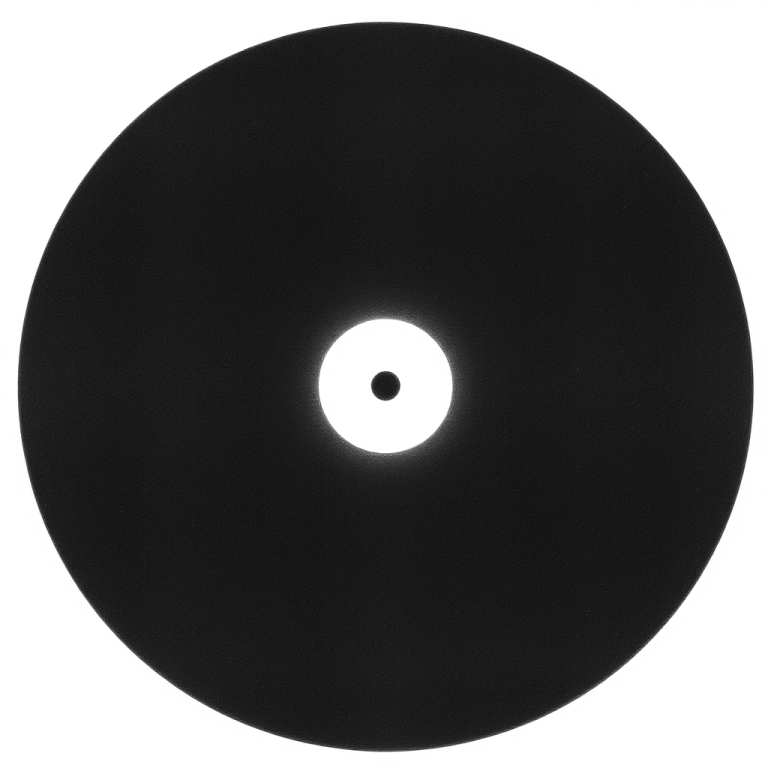
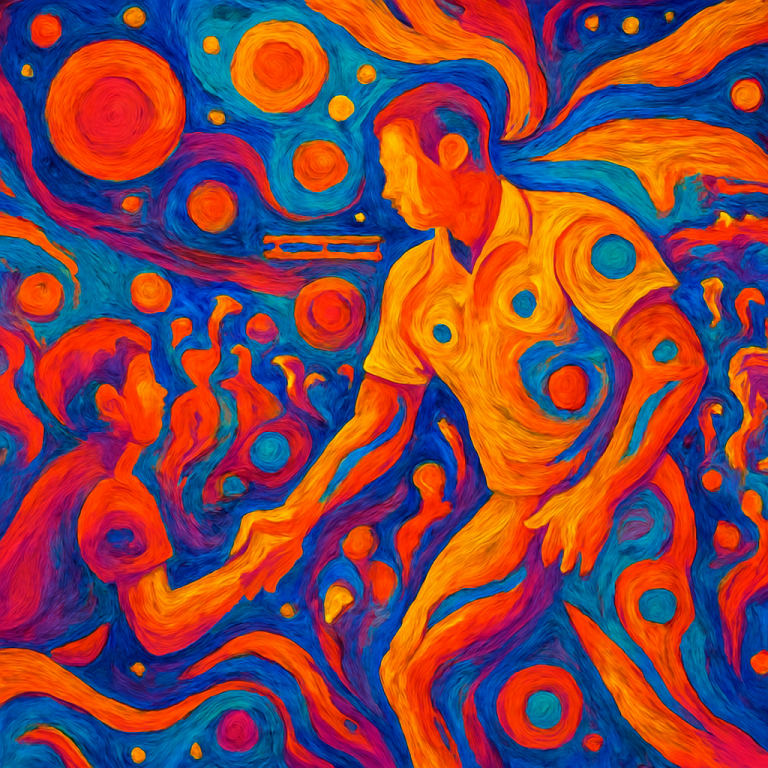




3 thoughts on “The Psychology Jaws at Magical 50 Years Of Storytelling”